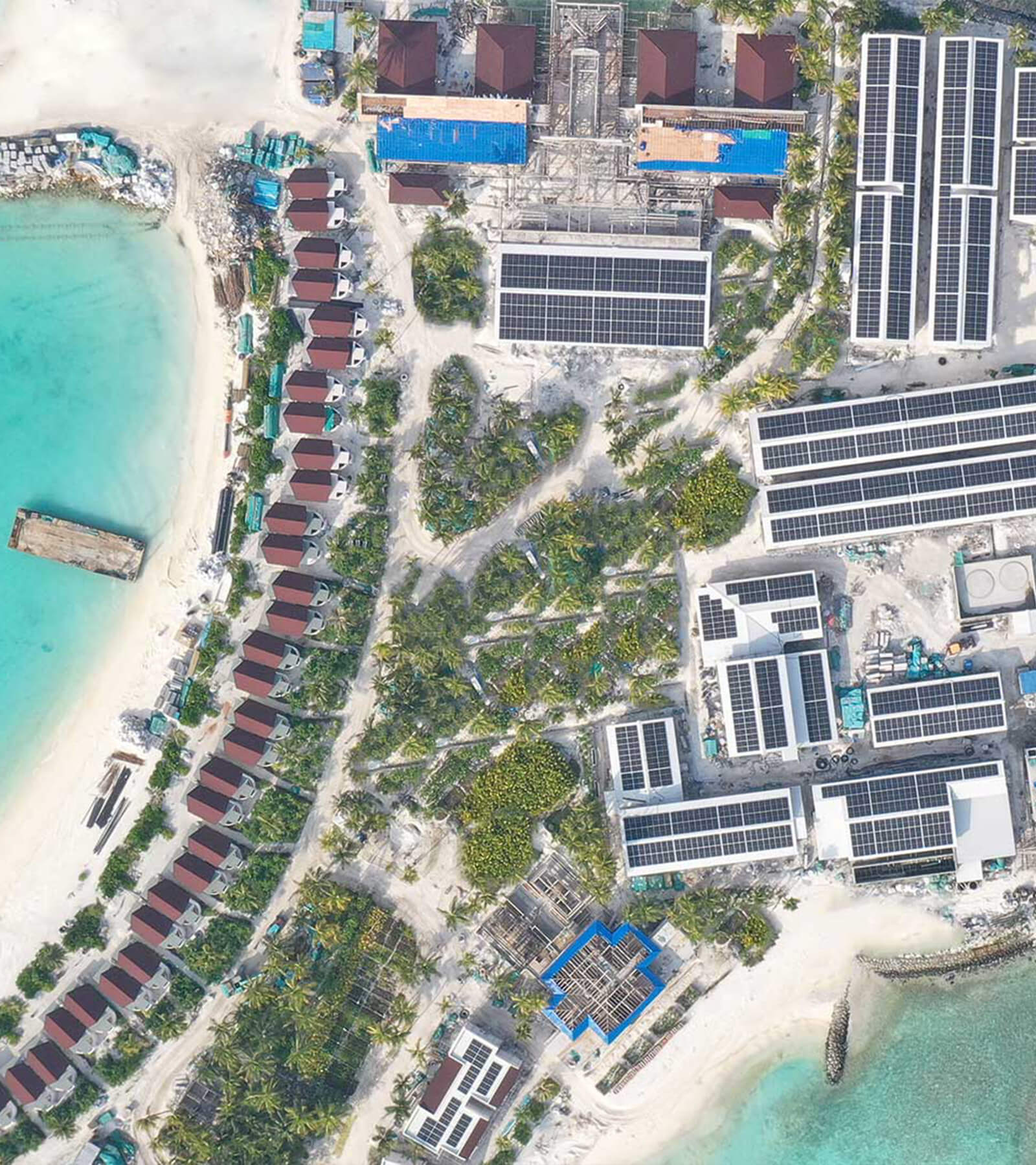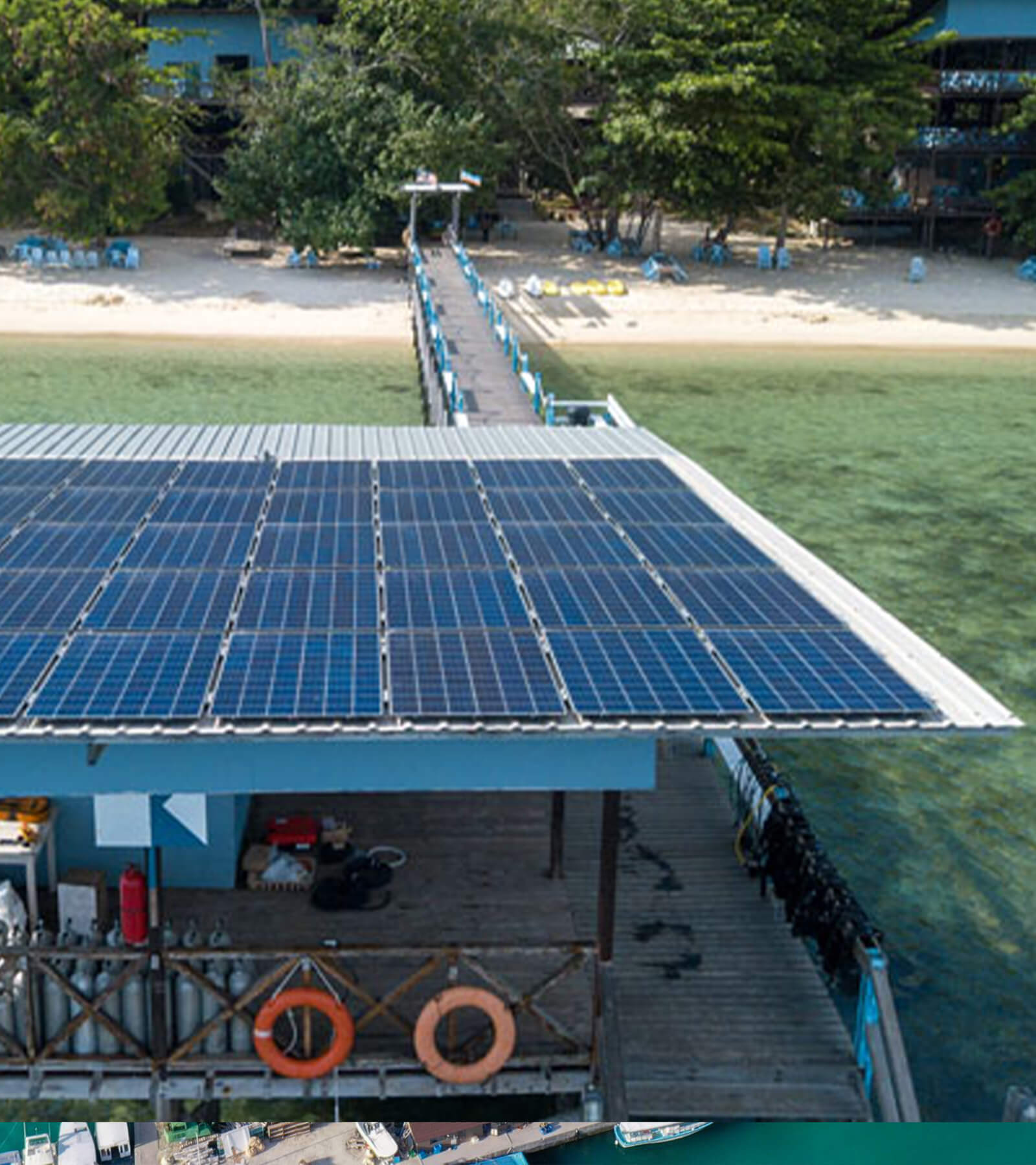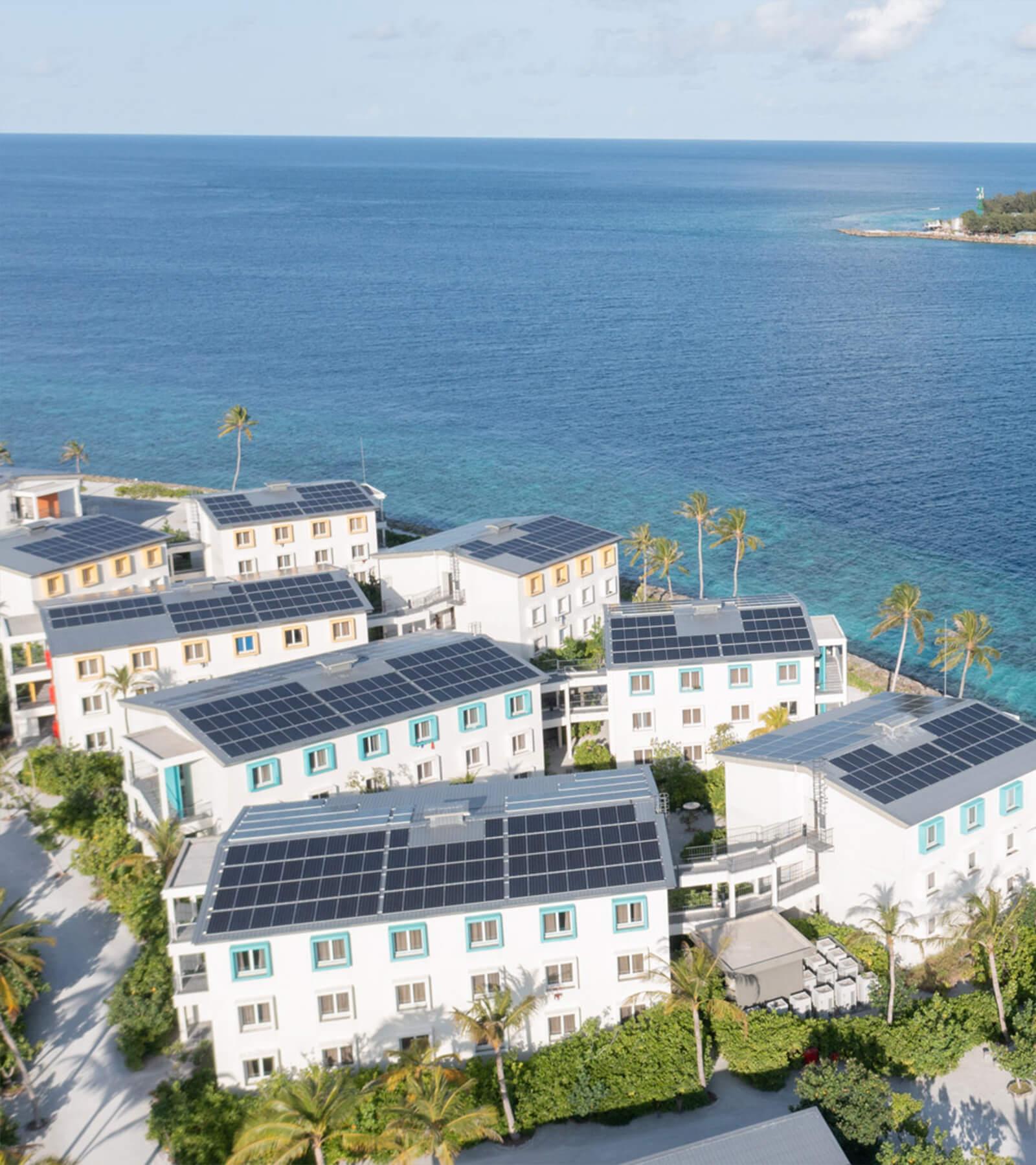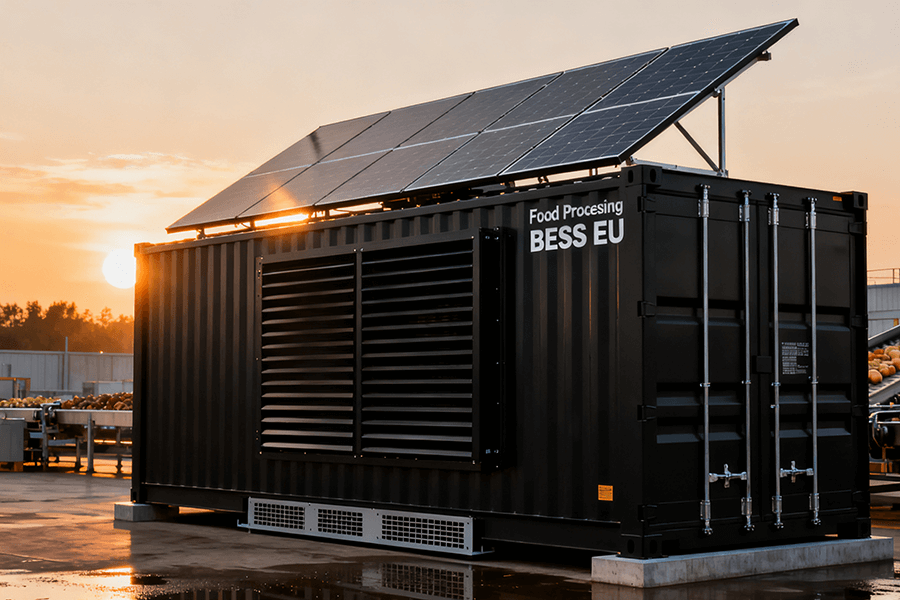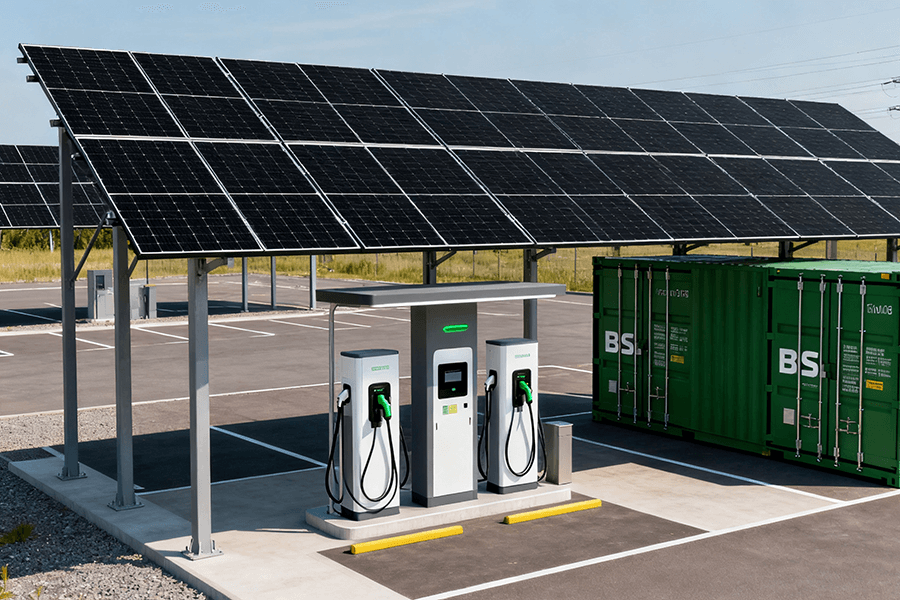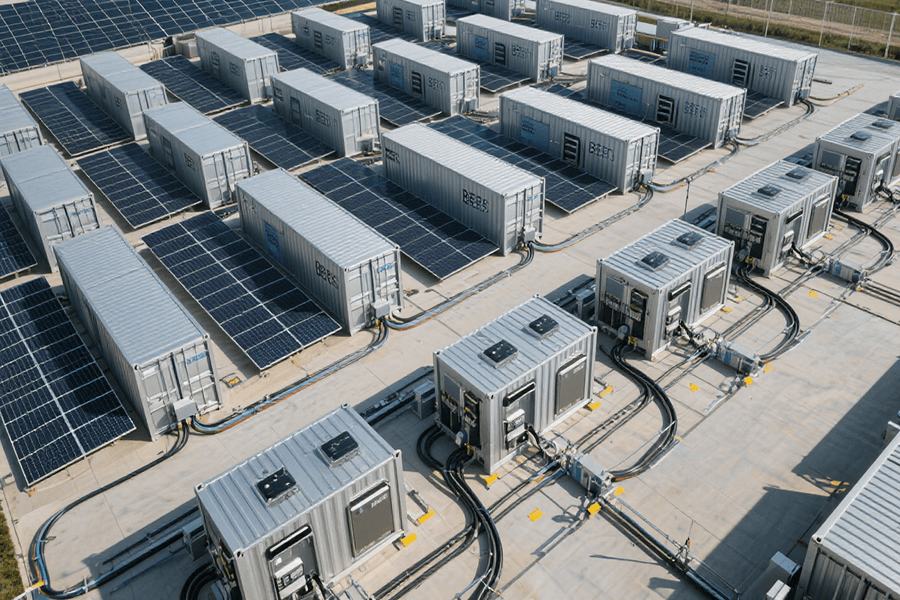
Introduction: The 2030 Energy Puzzle & BESS Containers as Game-Changers
The European Supergrid has transcended the realm of mere theoretical concepts; it is now a pressing reality with a ticking timeline. As per the EU’s ambitious mandate, by 2030, an impressive storage capacity ranging from 500–780 GWh is required. This substantial storage requirement is crucial for seamlessly integrating and harmonizing the fluctuating renewable energy flows across national borders, as outlined in the EU Commission’s 2023 report.
Envision the complex task of integrating the power grids of an entire continent. It’s akin to assembling a massive jigsaw puzzle, where each country’s grid presents unique characteristics, such as varying voltage standards and distinct energy demand patterns influenced by local weather conditions. These factors contribute to intermittent energy spikes and dips, posing significant challenges to the stability and reliability of the overall grid infrastructure.
This is where BESS (Battery Energy Storage System) containers emerge as game-changers. These compact and highly mobile units are poised to play a pivotal role in addressing the challenges of grid integration. One of their most remarkable capabilities is virtual inertia provision. To illustrate the significance of this feature, consider the Germany-Poland interconnectors. Here, BESS units have demonstrated their exceptional responsiveness by reacting to frequency dips in a mere 10 milliseconds—a speed that outpaces even the lightning-fast operations of a Formula 1 pit stop, as documented in the ENTSO-E 2024 report.
This rapid response time is not merely an impressive technical feat; it is a critical requirement for maintaining grid stability. In the interconnected European Supergrid, a sudden decrease in wind energy production in Denmark, for instance, could have far-reaching consequences. Without the swift corrective action provided by BESS containers, such an event could potentially trigger cascading power outages in Poland within a matter of seconds, leading to a scenario commonly referred to as “grid collapse.”
To further emphasize the importance of BESS containers in cross-border frequency regulation, consider the following table that compares the response times of traditional grid stabilization methods with those of BESS units:
| Stabilization Method | Response Time | Effectiveness in Cross-Border Scenarios |
|---|---|---|
| Synchronous Generators | Several seconds | Limited due to physical inertia and slower response |
| BESS Containers | 10 milliseconds | Highly effective, enabling rapid correction |
These numbers translate to a rapid transition from investment to profitability, making LFP Battery BESS Containers a strategic choice for solar farm operators seeking immediate and sustained returns.
Market Moves: How BESS Containers Conquer Cross-Border Markets
From Lone Rangers to Team Players: VPP Aggregation
In the evolving landscape of energy storage, the era of Battery Energy Storage System (BESS) containers operating in isolation has come to an end. The industry’s focus has shifted towards Virtual Power Plants (VPPs), which can be aptly compared to energy orchestras. In this metaphorical orchestra, 10 or more BESS units collaborate in perfect harmony, leveraging their combined capabilities to optimize energy management and market participation.
The strategic move towards VPPs is underpinned by compelling data. A 2024 study by the European Network of Transmission System Operators for Electricity (ENTSO-E) revealed that VPPs integrating aggregated BESS units can deliver 20% more efficient balancing services compared to individual units. This enhanced efficiency translates into significant economic advantages. For instance, a Dutch VPP comprising 12 BESS containers demonstrated the power of aggregation by earning €150/MWh in cross-border markets. This figure is three times higher than what any single unit could achieve independently (ENTSO-E, 2024).
The following table succinctly illustrates the performance and revenue disparities between single BESS units and VPPs with 10+ BESS units:
| Scenario | Efficiency Gain | Revenue Potential (€/MWh) | Key Advantages |
|---|---|---|---|
| Single BESS Unit | Base level | €50–70 | – Independent operation- Limited capacity for large-scale grid services- Lower revenue streams |
| VPP with 10+ BESS Units | +20% | €120–150 | – Pooled resources for enhanced flexibility- Ability to participate in cross-border markets- Higher revenue generation potential |
Cash Flow 101: BESS Containers’ Revenue Playbook
BESS containers possess a remarkable versatility, enabling them to adapt to various revenue-generating opportunities within the energy market. Their financial flexibility can be likened to that of chameleons, seamlessly adjusting to different market conditions to maximize profitability.
Energy Arbitrage: Capitalizing on Price Volatility
One of the primary revenue streams for BESS containers is energy arbitrage. This strategy involves purchasing electricity at low prices and selling it at higher prices, capitalizing on temporal and regional price differentials. For example, in Germany, electricity prices can drop to as low as €30/MWh during nighttime hours when demand is low. BESS containers can store this inexpensive electricity and sell it during peak demand periods, such as midday, when prices can soar to €100/MWh in day-ahead markets (EPEX Spot, 2025).
Ancillary Services: Ensuring Grid Stability
Another crucial revenue source for BESS containers is participation in ancillary services, with frequency regulation being a particularly lucrative segment. Maintaining grid frequency stability is essential for the reliable operation of electrical systems. BESS containers, with their rapid response capabilities, are well-suited to provide frequency regulation services.
The compensation for frequency regulation services varies by region, ranging from €20–100/MWh. For instance, in Sweden, where grid operators place a premium on fast-responding resources, BESS containers can command higher prices for their frequency regulation services (IEA, 2024). This highlights the importance of geographical location and market dynamics in determining the revenue potential of BESS containers in the ancillary services market.
Tech Talk: The Rules BESS Containers Can’t Break
No Static Allowed: Harmonic Mitigation <5%
Harmonic distortion represents a significant challenge within electrical grids, much like poor Wi-Fi signals that disrupt connectivity and performance. This phenomenon, characterized by the presence of unwanted frequency components in the electrical waveform, can lead to a range of detrimental effects. Transformers may overheat and experience premature failure, energy losses increase, and overall system stability is compromised. To maintain grid reliability and efficiency, keeping the total harmonic distortion (THD) below 5% is not just a recommendation—it is a critical requirement.
To achieve this stringent standard, active power filters play a crucial role. Functioning much like noise-canceling headphones that eliminate ambient noise, these filters work to counteract harmonic distortion in the grid. A compelling example of their effectiveness can be found in a case study conducted by the French Grid Operator RTE in 2024. In this instance, a 100MWh battery energy storage system (BESS) equipped with active power filters was able to reduce THD from 8%—a non-compliant level—to an impressive 2.7%, well within the desired threshold. This achievement not only underscores the importance of harmonic mitigation but also demonstrates the practical capabilities of modern BESS technology.
| Parameter | Initial Value | Final Value | Compliance Status |
|---|---|---|---|
| THD | 8% | 2.7% | Compliant |
Grid-Forming Inverters: The Brains of the Operation
Grid-forming inverters are essential components of BESS containers, serving a function similar to a GPS in navigation—without them, the system would lack direction and stability. These devices are required to adhere to EN 50438, the European Union’s comprehensive standard for ensuring stable grid connections. This standard outlines the technical requirements and performance criteria that inverters must meet to operate effectively within the grid.
The significance of EN 50438 compliance became evident during a wind outage in Sweden in 2024. When the wind energy supply suddenly dropped, grid-forming inverters that conformed to the EN 50438 standard were able to adjust the output of the BESS in real time. This rapid response was crucial in maintaining grid frequency stability at 50Hz, preventing a potential system collapse that could have occurred if non-compliant inverters were in use. As reported by Svenska Kraftnät, the Swedish transmission system operator, this incident highlighted the vital role that grid-forming inverters play in ensuring grid resilience and reliability, especially during periods of fluctuating energy supply.
Cross-Border Checklist: Surviving the Red Tape & Tech Hurdles
- Regulatory Hurdles: Navigating the regulatory landscape for cross-border battery energy storage system (BESS) integration poses significant challenges. A recent Belgium-Netherlands cross-border BESS project serves as a prime example, highlighting the complexity of regulatory processes. This project took a staggering 14 months to secure all necessary approvals, involving the acquisition of 7 permits, 3 environmental audits, and 2 grid code certifications.
| Regulatory Requirement | Quantity | Average Processing Time |
|---|---|---|
| Permits | 7 | 4-6 weeks each |
| Environmental Audits | 3 | 8-12 weeks total |
| Grid Code Certifications | 2 | 6-8 weeks combined |
These requirements, as reported by the Council of European Energy Regulators (CEER, 2024), not only delay project timelines but also increase costs and administrative burdens. The CEER report underscores the need for harmonized regulations across European borders to streamline the integration of BESS into the supergrid, ensuring more efficient and timely deployment of these critical energy storage solutions. Key areas for regulatory reform include:
-
- Mutual Recognition: Establishing a framework for automatic acceptance of approvals across member states
-
- One-Stop Shop: Creating unified application portals for cross-border projects
-
- Risk-Based Assessments: Tailoring regulatory requirements based on project scale and impact
- Real-Time Data: In the rapidly evolving energy market, real-time data processing and communication are essential for the effective operation of BESS in cross-border frequency regulation. To respond promptly to market signals within less than 1 second, reliable 4G/5G connectivity is crucial. Germany’s transmission system operator (TSO), 50Hertz, demonstrates an innovative approach in this regard.
Leveraging AI-driven platforms, 50Hertz is able to update BESS commands 10 times per minute (50Hertz, 2025). This high-frequency command update capability allows BESS to quickly adapt to fluctuations in grid frequency, ensuring grid stability and optimizing the utilization of energy storage resources. The platform’s architecture includes:
The use of advanced technology by 50Hertz showcases the potential for enhanced performance and reliability in BESS operations, setting a benchmark for other TSOs and energy providers in the European supergrid. Comparative analysis of different communication technologies reveals:
| Technology | Latency (ms) | Reliability (%) | Deployment Cost |
|---|---|---|---|
| 4G | 30-50 | 99.5 | Medium |
| 5G | 1-5 | 99.9 | High |
| Fiber Optic | 0.5-2 | 99.8 | Very High |
Edge Computing Nodes: Located at key grid connection points for low-latency processing
-
- Predictive Analytics: Using historical data to anticipate frequency changes
-
- Redundant Communication Links: Ensuring continuous operation during network outages
Why Maxbo Solar Leads the Pack
At Maxbo Solar, we redefine the boundaries of energy storage with our cutting-edge Battery Energy Storage System (BESS) containers, engineered to thrive in the complex landscape of cross-border energy integration. Our BESS containers are not just storage units; they are meticulously crafted solutions designed to withstand the rigors of the European Supergrid, ensuring seamless operation across diverse geographical and regulatory environments.
Here’s what sets our BESS containers apart:
Advanced Hardware for Optimal Performance
- EN 50438 Certified Inverters: Our BESS containers are equipped with EN 50438-compliant inverters, renowned for their high efficiency and reliability. These inverters are paired with state-of-the-art active filters that keep the Total Harmonic Distortion (THD) below 3%, ensuring clean and stable power output. This not only meets the stringent European grid codes but also enhances the overall performance and lifespan of the system.
- Robust Construction: Built to endure harsh environmental conditions, our containers feature a rugged, weatherproof design. They are engineered to operate efficiently in a wide range of temperatures, humidity levels, and altitudes, making them suitable for deployment across various regions of Europe.
Intelligent Software for Seamless Integration
- VPP-Ready Technology: Our BESS containers come preloaded with advanced software that is fully compatible with Virtual Power Plant (VPP) platforms. This enables seamless synchronization with over 100 units across Europe, allowing for coordinated operation and optimized energy management. The software provides real-time monitoring and control capabilities, enabling precise regulation of power output to match grid demands and contribute to grid stability.
- Predictive Analytics: Leveraging artificial intelligence and machine learning algorithms, our software offers predictive maintenance and performance optimization features. It can anticipate potential issues, schedule maintenance activities, and adjust system parameters in real-time to maximize efficiency and minimize downtime.
Regulatory Expertise for Hassle-Free Deployment
- In-Depth Regulatory Knowledge: Navigating the complex regulatory landscape of the European Union can be a daunting task. At Maxbo Solar, we have a dedicated regulatory team with extensive experience in EU energy policies and regulations. They understand the intricacies of cross-border energy projects and are well-versed in the approval processes of various European countries.
- Streamlined Approval Process: Our regulatory expertise has proven invaluable to our clients. For instance, in recent Spain-Portugal projects, we successfully reduced the approval time by 30%. This not only saves our clients valuable time and resources but also ensures that their projects can be implemented quickly and efficiently, minimizing potential delays and risks.
When the European Supergrid demands a reliable and innovative partner for cross-border frequency regulation, Maxbo Solar is at the forefront, ready to deliver solutions that exceed expectations. Our BESS containers are a testament to our commitment to excellence, reliability, and sustainability in the energy storage industry.


